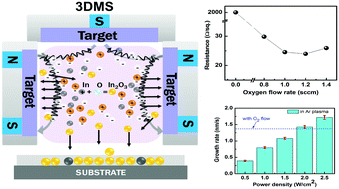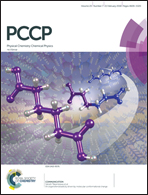Development and utility of a new 3-D magnetron source for high rate deposition of highly conductive ITO thin films near room temperature†
Abstract
As transparent conductive films, indium tin oxide (ITO) materials are being extensively used as electrodes in various technological and optoelectronic applications. The demand for ITO films is firmly increasing because of the widespread market growth in these industries, but the available solutions only partly fulfill the prerequisites of high transmittance, low resistivity, large area process, cost-effective manufacturing, high growth rate and low-temperature process. The present work demonstrates a possible framework for the detailed study of ITO coatings in addition to the development of a novel highly confined 3-D magnetron source (3DMS) that can be simply used for tailored products. In this work, the deposition conditions are optimized through plasma chemistry by utilizing various in situ plasma diagnostics. The emphasis is given to studying the effects of different deposition conditions such as power density and oxygen (O2) flow. Measurements show that the 3DMS can efficiently produce very high-density plasmas at a low-discharge voltage. The combined effect of high electron density and energy flux favors high growth rate deposition up to ∼1.75 nm s−1. By controlling the plasma parameters, energy flux on the substrate, In3+, Sn4+, oxygen vacancies, and mobility, highly transparent ITO film with a very low resistivity of ∼4.2 × 10−4 Ω cm is fabricated at low-temperature using a 3DMS process with the incorporation of O2 flow.



 Please wait while we load your content...
Please wait while we load your content...